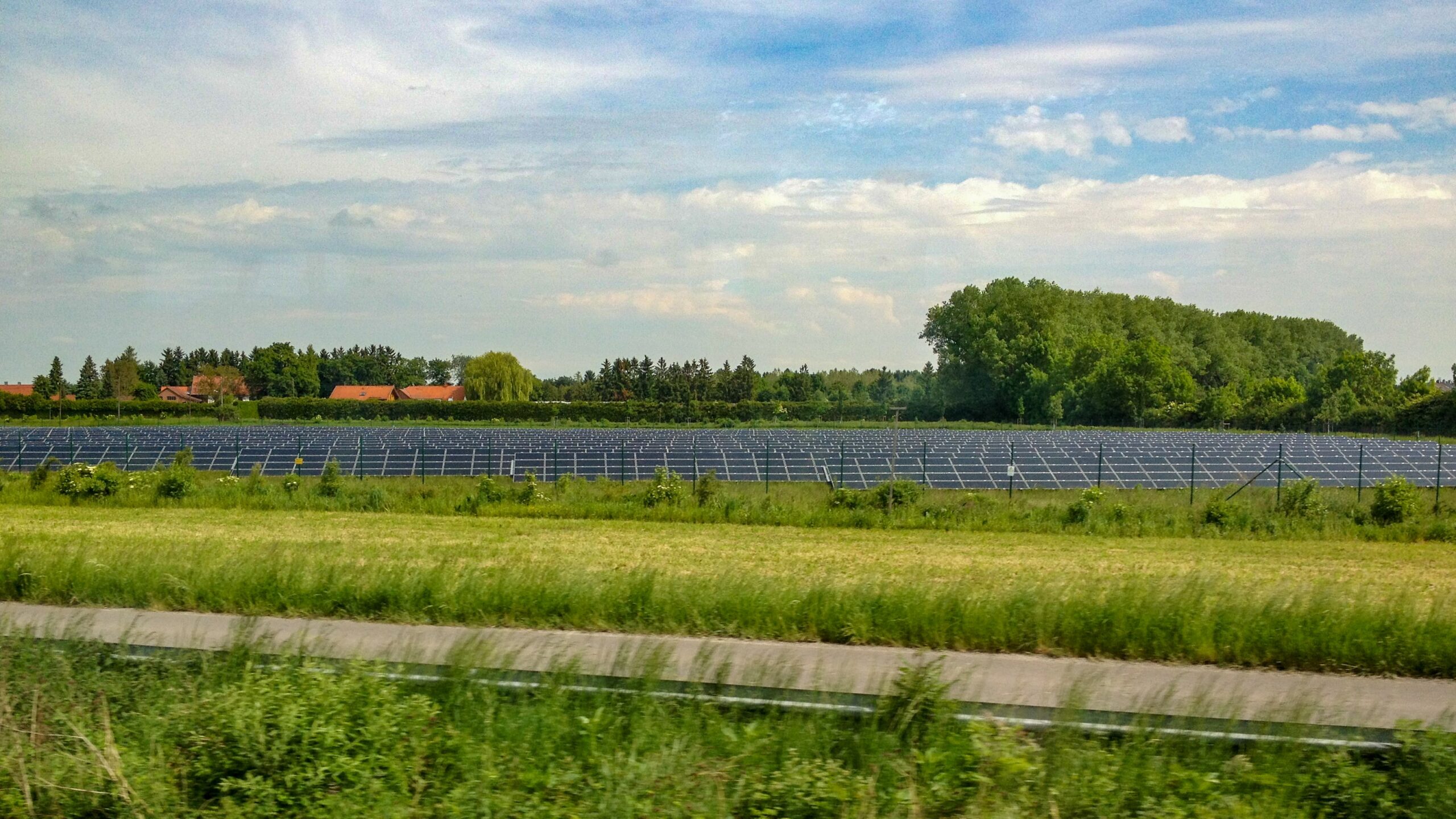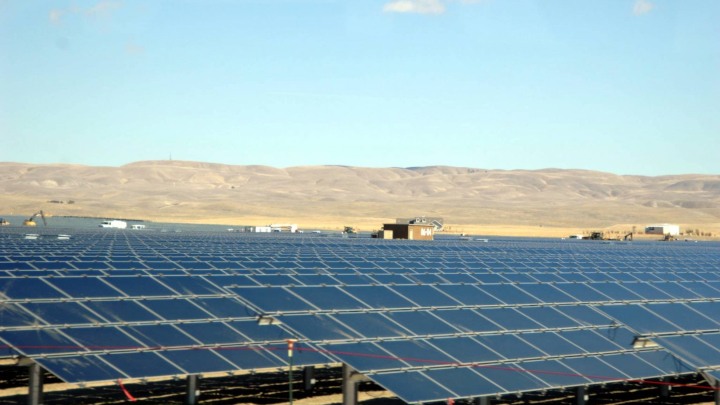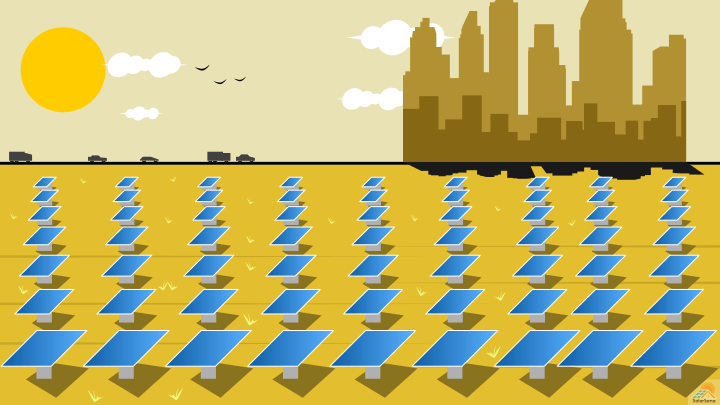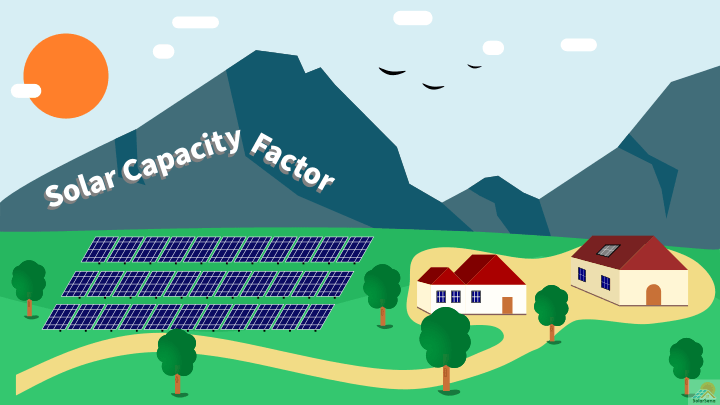It’s possible to make passive income from your land by leasing it out to a solar farm. If you’re a landowner, choices are you’ve found a way to monetize it. You might have a business on it, a farm, a ranch, or any other operation. No matter what, you want your land to generate income for you. But not all income is made the same: active income requires you to actively be running the business and taking on the headache of management, whereas pis just that – passive. You can earn consistent income without the active effort when you lease your land to solar developers and companies.
Solar Farm Lease Overview
Most folks think of solar panels as something they might put on the roof of their house, but there’s actually a massive industry behind large-scale solar panel operations. These solar panel arrays are often called solar farms because they are placed at a large scale as you might with crops. These solar installations can vary from a few acres to thousands of acres, and produce energy which can then be sold on the market. We’ve written extensively about the pros and cons of solar farms and the potential ROI, so feel free to check out those articles if you want to understand the concept first.
Passive Income Possible?
The main question that may be troubling you is whether a solar farm can truly be passive income. Well, it depends on how you set it up. Your highest return might be to build your own solar farm, but that’s going to require a lot of money up front, a large lead time, and expertise. In other words, it’s a very “active” investment in every sense.
Leasing your land or roof space to a commercial solar developer can be a great way to earn passive income. But you’re probably wondering how that works!

Factors in How Much Money You Will Make From Solar Land Lease
There’s a few steps which would need to occur before you could viably lease your land to a solar developer. Often, they’ll actually approach you, but if that’s not the case, then here’s a few things to consider:
Geography and Topography
Developers will want land that is ideal for a large solar array. That means flat and clear of any obstruction or potential shading like trees or mountains.
Location and Proximity to Power
You’ll also need to be somewhat near to a substation because the energy captured needs to be transported into the power market. If you don’t have a substation near you, special cabling would need to be laid, greatly raising costs for the developer.
Timeline
Solar developers are playing the long game, and will often want to sign 20-25+ year leases. Do you have the ability to commit to that sort of arrangement for the longterm?
Size and Scale
Solar farms benefit from economies of scale, which means if you only have a few acres, it might not be very viable or profitable for them to build a small solar farm. Consider if a developer would actually have enough space to be interested in building on your land. At the minimum, a few acres, and preferably 20 or more would be needed for a large developer.
Market
Solar developers make their money by selling the power into the energy market. If you’re in an area with an already very low cost of power, like North Texas for example, there’s much less incentive for solar farm development.

How Much Passive Income Can I Make Leasing Land to a Solar Farm?
If you meet the criteria laid out above, you might be able to lease your land to a solar farm. So, how much passive income can you actually make if you lease out your land for that solar panel farm? Well, it can vary greatly depending upon your circumstances.
The rent you will earn on your land can range from just a few hundred dollars an acre to over $2,500. For most folks in good markets, you should feel good getting $1500-2000 an acre. If you’re in a low demand area or if there are issues with your land, it could be much lower, even under $500.
Let’s say for example that you have 10 acres of land perfect for a solar farm. It’s completely flat, has no shading, and is close to substation. You’re in a high energy demand market and your county is running a solar / renewable energy goal program. A developer might approach you with a bid of $2,000/acre. In this situation your 10 acres when leased to a solar farm would earn you $20,000 a year.
One important note – solar development can take several years from the start to actually get permitted, built, and operational. So, you should request a portion of the payment, usually around $5,000 or so up-front from the developer when the project commences. This can both give you some cash for the downtime during development and also is a good signal of the financial health and seriousness of the developer.
Should You Lease Your Land for Passive Income from Solar Farm?
As you can tell, leasing your land to a solar farm can be a good way to make passive income, but only if you meet the aforementioned criteria. If you do, great! You could be a good candidate for solar farm development on your land.
So how do you make the decision of whether to pursue passive income from a solar farm lease arraignment or not? Well, there’s a few things to consider:
- Value of Your Land: Solar passive income can be good, but are there other uses for your land that could make you more money? If it’s desert, maybe not. If it’s agriculturally suited or full of woods, then a solar farm might not be the best option. You need to think about what the best financial ROI is going to be for your land.
- Stability: If you are reliant on seasonal or unstable revenues, like most farmers or oil and gas folks can be, then the consistent income from a solar land lease can be reassuring. It might not maximize your ROI, but as part of a holistic and balanced portfolio of income producing assets, it can offer some passive cash flow and low risk.
- Time Horizon: Solar land leases are a long-term commitment, often of 20 years or more. If your financial, health, or familial future is uncertain to a degree where that commitment might not be available to be fulfilled, you should consider pausing on a solar farm land lease until you have more visibility.
Conclusion
Leasing your land to a solar farm developer can be an easy way to generate passive income. You’ll earn rent from the solar developer, will be making use of otherwise vacant land, and won’t have to lift a finger. You should consider a solar farm land lease program if you have 20+ acres of flat land near a substation or transmission lines in a high energy market. You can expect to earn $1500/2000 an acre from a good solar farm land lease deal.



